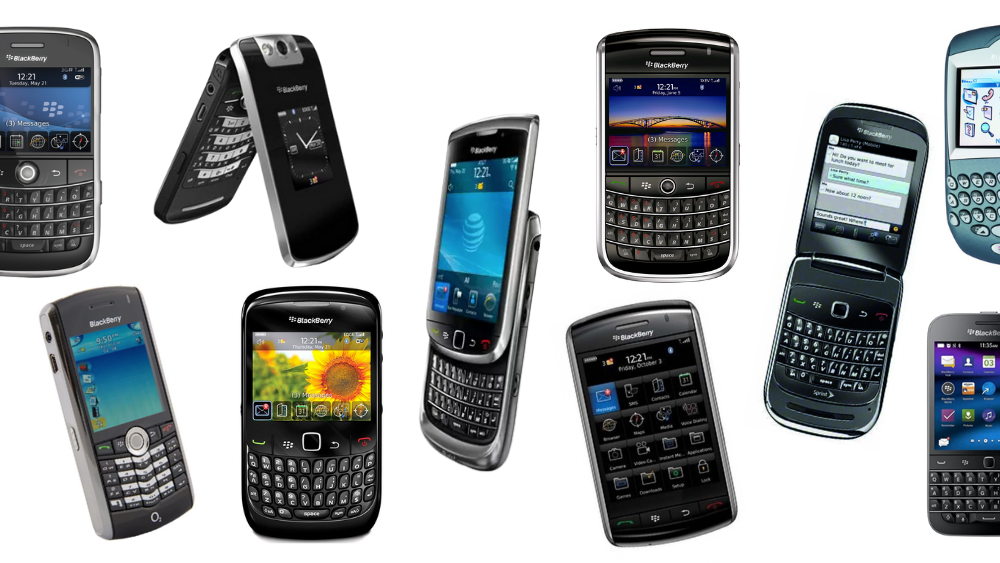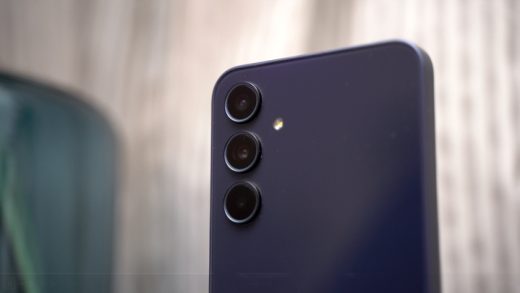BlackBerry is indeed one of the well-known phone brands. Perhaps most of the ’80s and ’90s kids would agree that this phone brand was iconic. And if you ever owned one BlackBerry phone back then, you would surely not forget about the remarkable QWERTY keyboard and BBM. But, sadly, those iconic days are fading, and while BlackBerry may still have users, it’s losing the popularity and even functionalities it used to have.

Moreover, on January 4, 2022, BlackBerry‘s legacy services for BlackBerry 7.1 OS and earlier, BlackBerry 10 software, BlackBerry PlayBook OS 2.1, and earlier versions will no longer be available. This means that devices running these legacy services and software through either carrier or Wi-Fi connections will no longer reliably function, including for data, phone calls, SMS, and 9-1-1 functionality. Before we officially say goodbye to the brand’s classic devices, let’s refresh our memories of some of the most iconic BlackBerry phones of all time.
Table of Contents
BlackBerry 850

850 | Photo credits: CrackBerry
The very first device to carry the BlackBerry branding was the BlackBerry 850. It is an email pager, which was released on January 19, 1999. It is dubbed as the brand’s first handheld device and it sat within the two-way pager category, along with a few other devices including the 857, 900, 950, 957, and 962. Further, it features a screen resolution of 132 x 65 pixels, a thumb keyboard, and a thumbwheel for scrolling.
BlackBerry 5000 series

5810 | Photo credits: CNET
The 5000 and 6000 series devices were the first lineups to incorporate a mobile phone with a pager. BlackBerry has unveiled the 5810 Wireless Handheld on March 4, 2002. It is the brand’s Java-based wireless handheld that features a “wireless email solution with the convenience of a built-in phone.” It sports a thumb-typing keyboard, navigation track wheel, large screen, intuitive interface, and a headset jack for optional phone services. The 5000 series included the 5820 (which had phone capabilities via a headset) and the email-only 5790.
BlackBerry 6000 series

6710 | Photo credits: ZDNet
The BlackBerry 6710 was one of the 6000 series, which was released in 2003. It features a classic phone design, a large monochrome LCD with 160 x 160 pixels, and 16MB of built-in memory. It has dimensions of 121 x 77 x 18mm and weighs only 138g. The 6000 series included the 6210, 6220, 6230, 6280, 6510, 6720, and 6750.
BlackBerry 7000 series

7290 | Photo credits: T-Mobile
BlackBerry’s 7000 series arrived with the same features as the 5000 and 6000 series but introduced a color screen. Among the series is the BlackBerry 7290, released in 2003. It offers a medium screen with a 240 x 160 resolution or a large one with 240 x 240 pixels. Additionally, it was also one of the first to offer Bluetooth. More so, the series also included the 7210, 7220, 7230, 7250, 7270, 7280, 7510, 7520, 7730, 7750 and 7780.
BlackBerry Pearl

Pearl 8100 | Photo credits: CNET
The 8000 series (Pearl) was identified as the start of the “consumer” devices. These models included an updated color screen, a larger memory, a microSD slot, a camera, a media player, and other multimedia functions.
The Pearl 8100 was the first to introduce the new trackball navigation, instead of the usual trackwheel that other devices used to sport. The name Pearl came from the look of the trackball on the device. The Pearl series also included the 8110, 8120, 8130, 8220, 8230, 9100, and 9105.
BlackBerry launched an update to the Pearl in 2010. Similar to the original Pearl, the 9100 featured two letters per button to allow for a slimmer build. In addition, this model had a 3.2MP camera, 2GB of RAM, and a microSD expansion of up to 32GB.
BlackBerry Curve

Curve 8520 | Photo credits: BlackBerry
The BlackBerry Curve brand was introduced on May 3, 2007, with the launch of the Curve 8300. The Curve brand continued the consumer-oriented path of the BlackBerry Pearl, including multimedia features and a built-in camera. It also featured a couple of variations, most of which had a 2MP camera, a navigation trackball, and a display with 320 x 240 resolution. Meanwhile, some of the things that changed here include a higher resolution display, a wider and full QWERTY keyboard, and other features.
Another Curve device was the Curve 8520. It got a stylish glossy finish and a sleeker look. It’s a bit smaller than the previous full QWERTY BlackBerry handsets. The phone feature a 2.64-inch display with a resolution of 320×240 pixels.
Furthermore, the brand updated the Curve model in 2010, with the Curve 9300— with GPS and HSDPA, and was called the Curve 3G. Sporting the same form factor and design, the Curve 3G 9300 is an upgrade to the Curve 8520.
BlackBerry Pearl Flip

Pearl Flip 8220 | Photo credits: BlackBerry
Of course, the brand also got its flip offering. The BlackBerry Pearl Flip 8220 was unveiled in 2008 with a clamshell form factor. It featured an internal display of 240 x 320 resolution and an external display of 128 x 160 resolution. It also got the same trackball interface as the Pearl series, along with a 2MP camera, 128MB internal memory, and microSD support of up to 16GB.
BlackBerry Bold

Bold 9000 | Photo credits: CrackBerry
And we’re now at BlackBerry’s most popular line, the Bold. This line arrived in 2008 with the 9000 model. It also got a wider format as the Curve, with a full QWERTY keyboard, and a trackball interface. During the Bold era, BlackBerry got us a premium phone design with a leather back. Moreover, the Bold series was more expensive with its more expensive materials and higher specifications.
Meanwhile, the company updated the Bold range at the end of 2009 with the 9700 model. Following these are the 9650 and 9780 in 2010. The trackball was replaced with a trackpad and the display resolution enhanced up to 480 x 360 pixels to move from 220 PPI to 250 PPI.
What’s more, the Bold 9700 and 9650 models came with a 3.2MP camera, while the 9780 came at the end of 2010 with a 5MP megapixel autofocus camera. However, in 2011, the company unveiled the Bold 9900 with a 2.8-inch touchscreen, QWERTY keyboard, optical trackpad, NFC, and a 1,230mAh battery. It also got a 5MP camera with 720p HD video recording.
BlackBerry Storm

Storm 9530 | Photo credits: Amazon
The first BlackBerry Storm was launched in 2008, sporting a clickable touchscreen with no physical QWERTY keyboard. It was BlackBerry’s first attempt to go full touchscreen, breaking away from its iconic QWERTY design and it has no trackball. The Storm 9530 sports a 3.25-inch display, 3.15MP camera, and a removable 1,400mAh battery.
Moreover, the 9500 model featured a 3.2 MP camera and 1GB of RAM. On the other hand, the 9550 model arrived in 2009 with a larger 2GB of RAM.
BlackBerry Tour

Tour 9630 | Photo credits: CrackBerry
The BlackBerry Tour 9630 was unveiled in July 2009. It arrived with a display with a 480 x 360-pixel resolution with 250 PPI. It also got a 3.2MP camera and microSD expansion of up to 32GB. In addition, there was also a trackball interface like the Curve and the Bold. Other key features include voice calling, video capture, 3.5mm audio jack, memory card slot, push email, QWERTY keyboard, Bluetooth, and GPS navigation.
BlackBerry Torch

Torch 9800 | Photo credits: 4gltemall.com
The first BlackBerry Torch was unveiled in 2010 with the 9800 model. It came with a 3.2-inch touchscreen offering a 480 x 640 resolution for a pixel density of 250 PPI, which could slide up to show off a full QWERTY keyboard. Moreover, it also got a 5MP camera on board, as well as an optical trackpad. This line was updated a few times in 2011 with the 9810, 9850, and 9860 models with upgrades in display size and resolution.
BlackBerry Style

Style 9670 | Photo credits: BlackBerry
Another flip-style device from BlackBerry is the Style 9670. It was unveiled at the end of 2010 featuring a flip design like the Pearl Flip. The internal display featured a resolution of 360 x 400, while the external display had a 240 x 320 resolution. When open, users had access to a full QWERTY keyboard, along with an optical trackpad. There was also a 5MP camera onboard.
BlackBerry Bold Touch

Bold Touch 9930 | Photo credits: Shopee
The Bold Touch first arrived in 2011, offering the optical trackpad, a full QWERTY keyboard, and a touchscreen interface. Other features include NFC and a 5MP camera. The lineup includes the Bold Touch 9900, 9930, and 9790 touchscreen smartphones. The Bold 9900/9930 are just 10.5mm thin (previous models come at 14mm thick), and they were dubbed as the thinnest BlackBerry devices yet.
BlackBerry Z10

Z10 | Photo credits: Amazon
The Z10 was the first model to sport the BB10 operating system, launched in 2013. It came with a 4.2-inch display with 1280 x 768-pixel resolution. It also sports a dual-core 1.5GHz processor supported by 2GB of RAM, 16GB of storage, and a 1,800mAh battery. Other features include an 8MP rear camera, a 2MP front camera, and up to 10 hours of battery life.
BlackBerry Q10

Q10 | Photo credits: Amazon
Following the Z10, the Q10 was the second device powered by BB10. Launched in April 2013, it offered a 3.1-inch 720 x 720-pixel resolution display along with a full QWERTY keyboard. It also came with a dual-core 1.5GHz processor, 2GB of RAM, 16GB of storage, an 8MP rear camera, and a 2MP front camera.
BlackBerry Q5

Q5 | Photo credits: Amazon
The Q5 followed the Q10 release, which arrived in June 2013. There is a 3.1-inch IPS LCD with a 720 x 720-pixel resolution, a dual-core 1.2GHz processor, 2GB of RAM, 8GB of storage, and a 2,180mAh battery. In addition, the full QWERTY keyboard was on board, along with a 5MP rear camera and a 2MP front camera.
BlackBerry Z30

Z30 | Photo credits: Lazada
The Z30 was released in October 2013. It was equipped with BB10, as well as a 5-inch AMOLED display. It also came with a 1.7GHz dual-core processor, 2GB of RAM, 16GB of storage, and a 2880mAh battery. The Z30 was a touchscreen-only device with no physical QWERTY keyboard on offer. It follows the same full touchscreen design of the original Z10 but this time it’s more curved corners and a smoother finish.
BlackBerry Passport

Passport | Photo credits: Amazon
The BlackBerry Passport was launched in September 2014. It was a Marmite device featuring a 4.5-inch square display with a 1440 x 1440-pixel resolution. Moreover, it was powered by a Qualcomm Snapdragon 801 processor, 3GB of RAM, 13MP rear camera, 2MP front camera, and a 3,450mAh battery. It also offered a physical QWERTY keyboard again.
BlackBerry Classic

Classic | Photo credits: Amazon
Following the Passport, the Classic came in December 2014, sporting a similar design as the Bold. It is a smartphone that packs a QWERTY keyboard, a 3.5-inch square screen, and an old-school trackpad. It also came with an 8MP rear camera and a 2MP front camera. Additionally, it got a 1.5GHz processor and 2GB of RAM onboard.
BlackBerry Leap

Leap | Photo credits: Amazon
The Leap came four months after the launch of the Classic. It featured a 5-inch display, a Snapdragon S4 Plus processor, 2GB of RAM, 8MP rear camera, 2MP front camera, and 2,800mAh battery. It was identified as the last BB10 device.
There you have it! BlackBerry brought iconic phones that we won’t forget. It’s definitely sad to see something as well-known as BlackBerry that once disrupted the industry eventually fade. However, it always has been part of our memories as phone users. For sure, it is undeniably classic and it will be missed.
























